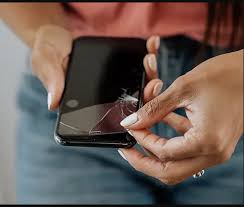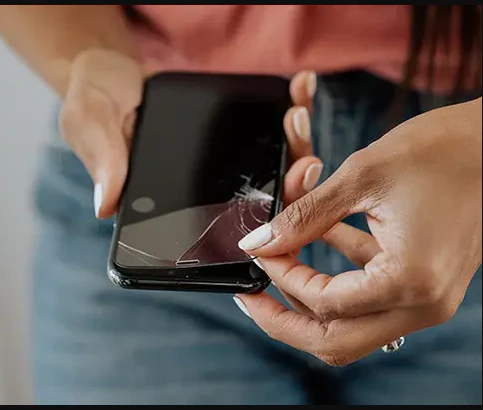As our lives become increasingly intertwined with technology, the question of how to best protect our devices while maintaining their functionality becomes even more crucial. One common method of safeguarding our screens is through the use of screen protectors. However, many users are left wondering – do these protective layers have an impact on the touch sensitivity of our beloved gadgets? Join us as we delve into the world of screen protectors and uncover the truth behind their potential effects on touch sensitivity.

- Impact of Screen Protectors on Touch Sensitivity
Many smartphone users wonder whether screen protectors have any impact on the touch sensitivity of their devices. Screen protectors are thin layers of material that are applied to the screens of electronic devices to protect them from scratches, smudges, and other damage. While screen protectors are designed to be transparent and unobtrusive, some users have reported that they can affect the touch sensitivity of their screens.
One factor that can affect touch sensitivity when using a screen protector is the material that the protector is made of. Screen protectors can be made from various materials, such as tempered glass, PET film, or TPU. Each material has different properties that can impact touch sensitivity. For example, tempered glass screen protectors are often thicker and more rigid than PET film protectors, which can reduce touch sensitivity. On the other hand, PET film protectors are thinner and more flexible, which can maintain or even enhance touch sensitivity.
Additionally, the way a screen protector is applied can also affect touch sensitivity. Air bubbles or improper alignment of the protector can create gaps between the protector and the screen, which can interfere with touch responsiveness. Proper installation of the screen protector is essential to ensure that it does not negatively impact touch sensitivity.
- Factors Influencing Touch Response with Screen Protectors
Factors influencing touch response with screen protectors can vary depending on the type and quality of the screen protector being used. Here are some key factors to consider when determining how screen protectors may affect touch sensitivity:
- Material: The material of the screen protector can play a significant role in touch response. Certain materials may interfere with the touch screen’s ability to accurately detect touch input, leading to reduced sensitivity.
- Thickness: Thicker screen protectors may create a barrier between the user’s finger and the actual touch screen, potentially impacting touch sensitivity. Thinner screen protectors are generally preferred for maintaining optimal touch response.
- Installation: Proper installation of a screen protector is crucial for maintaining touch sensitivity. Air bubbles or misalignment during installation can cause issues with touch response, so it’s important to follow installation instructions carefully.
Overall, while screen protectors can provide an extra layer of protection for your device, it’s important to choose a high-quality, thin screen protector and ensure proper installation to minimize any negative impact on touch sensitivity. By considering these factors, you can help maintain optimal touch response with a screen protector on your device.
– Choosing the Right Screen Protector for Maintaining Touch Sensitivity
When it comes to choosing the right screen protector for your device, one of the most important factors to consider is how it will affect touch sensitivity. Many people worry that adding a screen protector will diminish the responsiveness of their touchscreen, but fear not – there are plenty of options available that will maintain or even enhance touch sensitivity.
One of the key things to look for in a screen protector is the material it is made from. **Tempered glass** screen protectors are known for their high level of touch sensitivity, as they are designed to feel just like the original screen. Additionally, **ultra-thin** screen protectors are also a good choice, as they are less likely to interfere with the touchscreen’s responsiveness.
Another factor to consider is the **thickness** of the screen protector. Thicker protectors may add an extra layer between your finger and the screen, which can sometimes reduce touch sensitivity. Opt for a thinner protector if maintaining touch sensitivity is a top priority.
Ultimately, the key is to do your research and choose a high-quality screen protector that is specifically designed to maintain touch sensitivity. With the right protector in place, you can keep your screen safe without sacrificing the responsiveness of your touchscreen.
– Tips for Maximizing Touch Sensitivity with Screen Protectors
Screen protectors can sometimes affect touch sensitivity on your device, but with the right tips, you can maximize sensitivity and ensure a seamless user experience. Here are some ways to optimize touch sensitivity with screen protectors:
- Choose a high-quality screen protector that is specifically designed for touch sensitivity.
- Make sure to clean your screen and the protector regularly to avoid any buildup that could impact sensitivity.
- Adjust the touch sensitivity settings on your device to compensate for any changes caused by the screen protector.
- Consider using a stylus if you find that touch sensitivity is still an issue with the screen protector.
By following these tips, you can enjoy the benefits of using a screen protector without sacrificing touch sensitivity on your device.
In conclusion, while some screen protectors may have a minimal impact on touch sensitivity, the overall experience may vary depending on the quality and type of protector used. It is important to consider your personal preferences and needs when choosing a screen protector for your device. Ultimately, finding the right balance between protection and functionality is key in ensuring a seamless touchscreen experience. Whether you opt for a tempered glass protector or a thin film, remember that the choice is ultimately yours to make. So go ahead, protect your screen and touch on!
